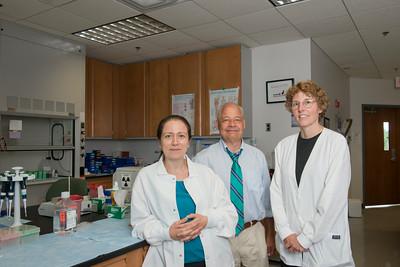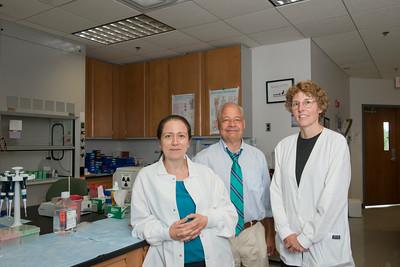
After three years and 300 patients, George Mason University researchers have proof that their early-detection urine test for Lyme disease works.
It's the largest study of its kind looking at early-stage indicators for Lyme disease, said Lance Liotta, co-director and medical director of the George Mason-based Center for Applied Proteomics and Molecular Medicine. "We are looking at a highly specific protein shed from the surface of the bacteria that causes Lyme."
The research was published in the Journal of Translational Medicine.
And now Mason researchers are applying the approach to Ebola, malaria and tuberculosis, among other diseases. The Mason team is working side by side with the private company Ceres Nanoscience, which Liotta and his co-director Chip Petricoin co-founded. A test that works like a pregnancy test could be used in undeveloped countries to quickly identify disease, even when patients aren't near a hospital, he said.
The National Institutes of Health funded the research that led to Mason's patented technology, which traps tell-tale clues (such as the Lyme bacteria protein) that a disease is present. The Mason technology, which is licensed to Ceres, works during the earliest stages of disease and finds the tiniest traces missed by most diagnostic tests.
In the case of Lyme disease, some patients may still have active cases but traditional tests don't register it, Liotta said. These patients may not be receiving the additional round of treatment they need, he said.
"If the patient gets better, the test goes negative," Liotta said. "It's a good way to monitor the patient."
"We're looking to repeat the story again with these other diseases," said Alessandra Luchini, a Mason professor who spearheaded the Lyme test research, is a co-inventor of the technology, and continues to develop new applications. "Other targets for the new type of test include Chagas disease, which is infectious and caused by a parasite, and toxoplasmosis, another parasite-borne disease."
###
About George Mason
George Mason University is Virginia's largest public research university. Located near Washington, D.C., Mason enrolls more than 34,000 students from 130 countries and all 50 states. Mason has grown rapidly over the past half-century and is recognized for its innovation and entrepreneurship, remarkable diversity and commitment to accessibility.
Media Contact
Michele McDonald
[email protected]
703-993-8781
@GeorgeMasonNews
http://www.gmu.edu





